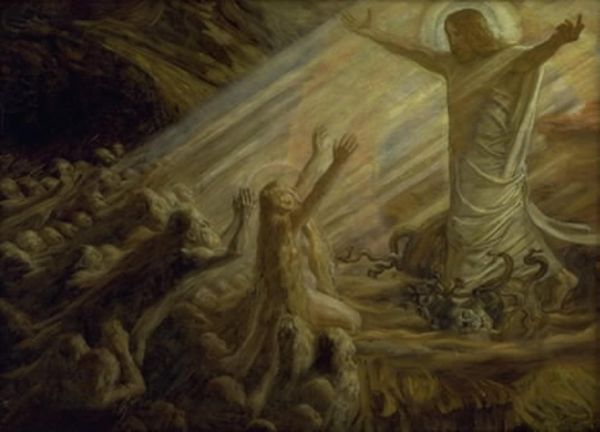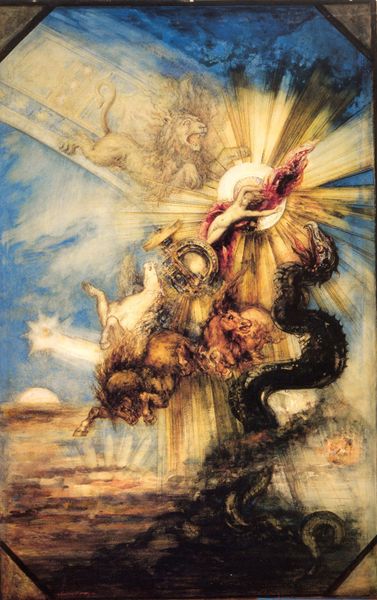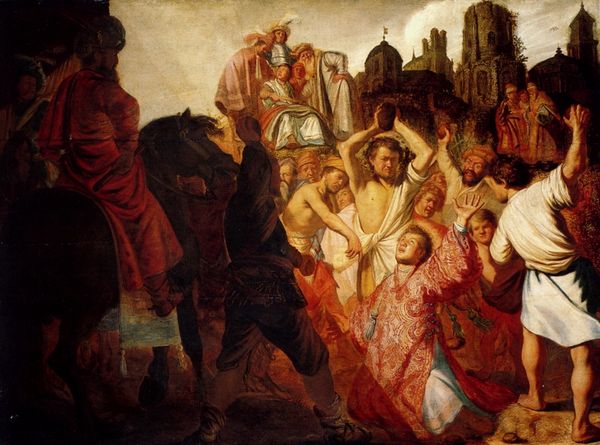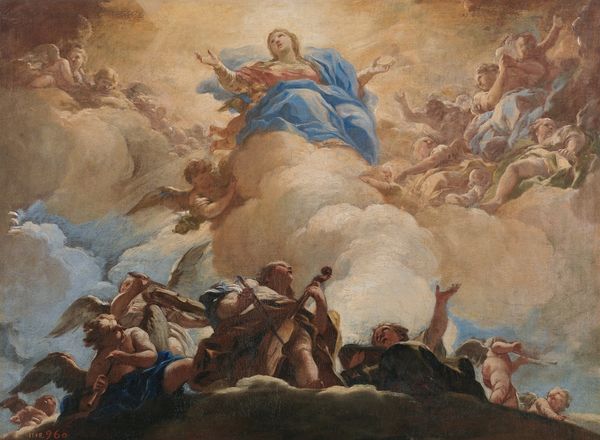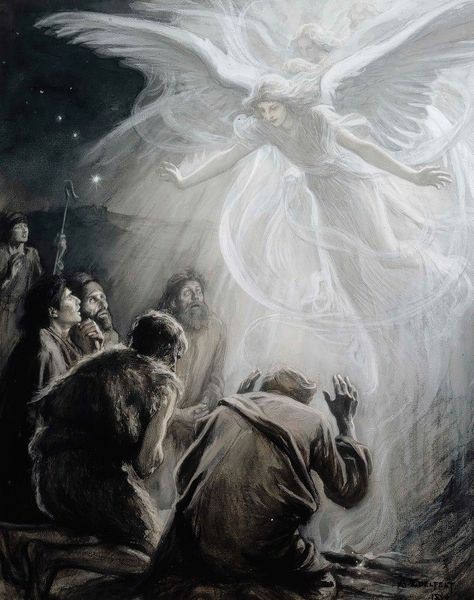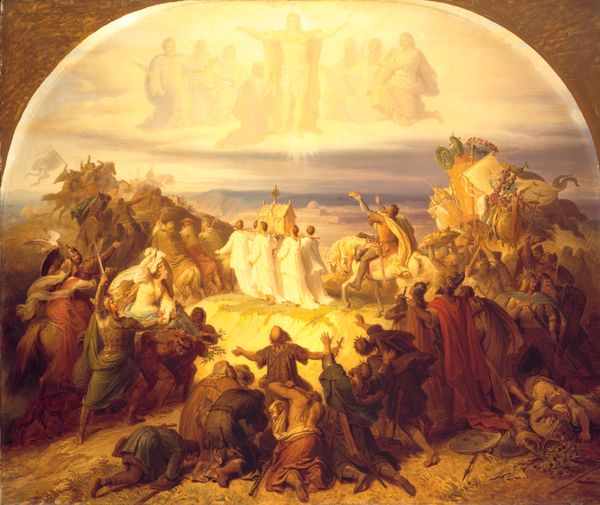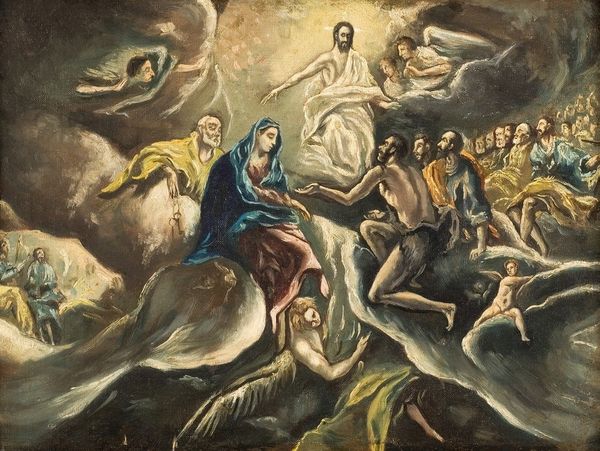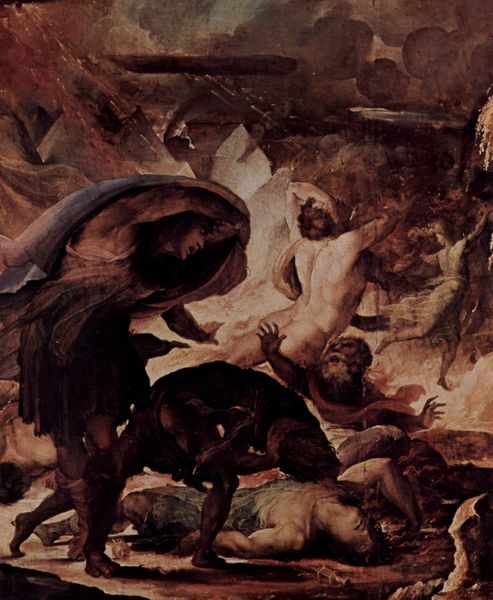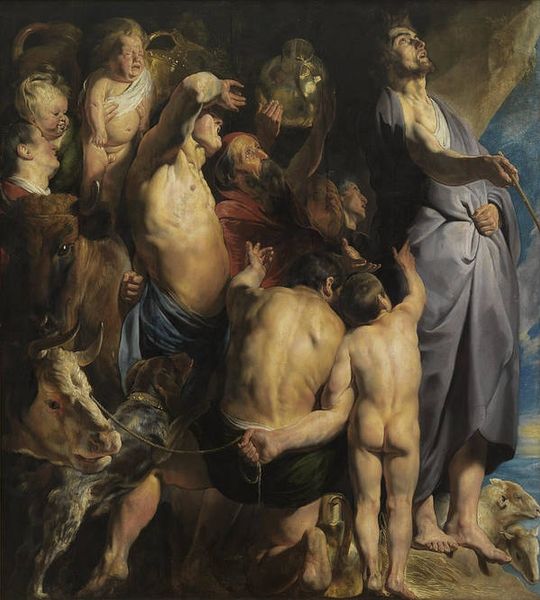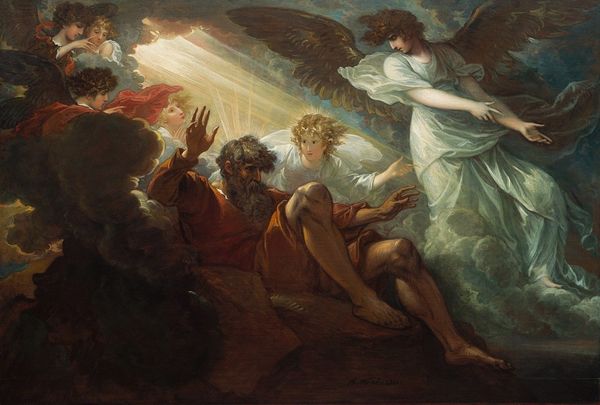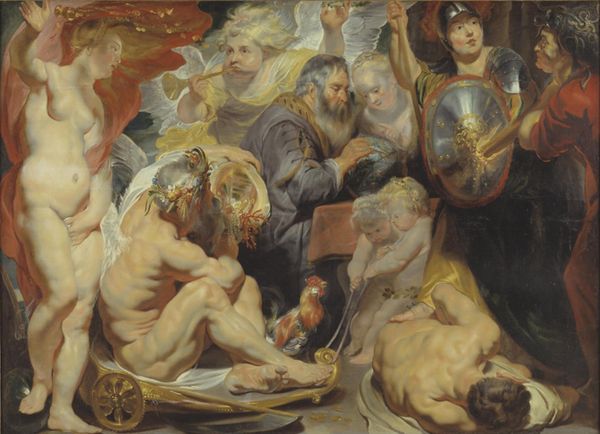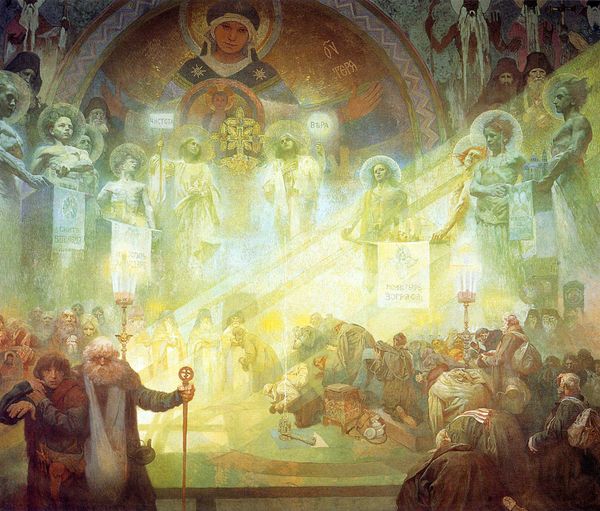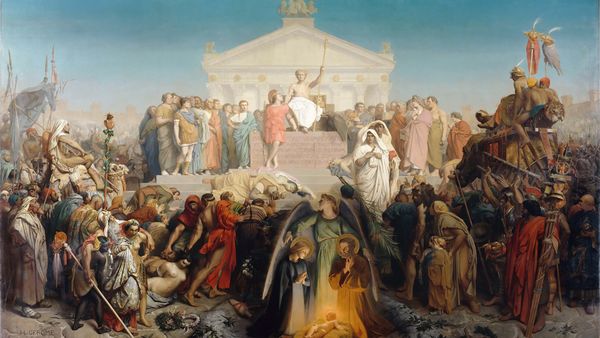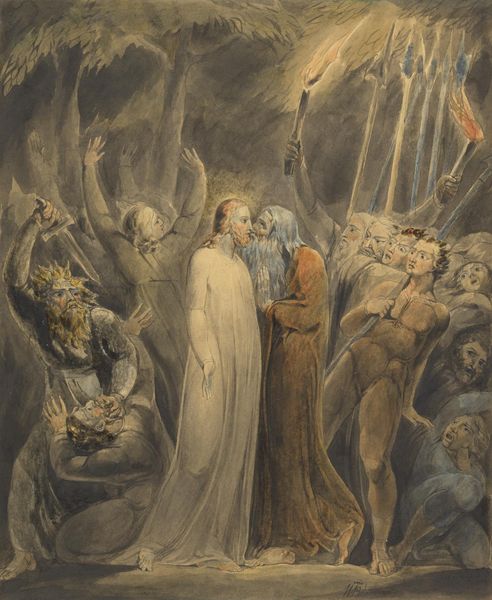
Dimensions: 351.5 cm (height) x 489 cm (width) (Netto)
Joakim Skovgaard created "Christ in the Realm of the Dead" with oil on canvas. Skovgaard lived during a time of significant social change, with growing industrialization and urbanization challenging traditional religious beliefs. Here, Christ stands triumphant over death and evil, represented by snakes and a skull under his feet. Yet, it is the figures in the lower left of the canvas which evoke the most emotional response, as a large crowd reaches out to Christ. Their yearning reflects a deep human desire for redemption and hope, particularly poignant given the societal anxieties of Skovgaard’s time. The artist’s religious conviction shaped this piece, presenting an opportunity to explore humanity's relationship with faith. Skovgaard’s "Christ in the Realm of the Dead" invites us to confront our own understandings of mortality, spirituality, and the search for meaning.
Comments
statensmuseumforkunst almost 2 years ago
⋮
Skovgaard regarded his work as an artist as a calling; his art should work as compellingly as possible in God’s service. The painting shows Jesus entering the realm of the dead as an almighty force, capable of saving and redeeming mankind at any time. After the Crucifixion, Christ descends into the Realm of the Dead on Easter Eve to release the lost souls. With Adam and Eve at the front, the nameless dead reach out to the lightbringer who crushes the symbols of death and evil underfoot while a dark figure flees the light in the top left corner. A literary basisThe literary basis for this scene was N. F. S. Grundtvig’s (1783-1872) new version (1837) of Caedmon’s Old English poem about the storming of Hell, I Kvæld blev der banket på Helvedes Port (Tonight there was a Knocking at the Gates of Hell). Skovgaard regarded his work as an artist as a calling, and his task was to let great art work as convincingly as possible for the dissemination of Christianity and the work of God. Christ depicted as an almighty forceWorking out of deeply anchored personal beliefs, Skovgaard insists on depicting Christ as an almighty force that can still fight titanic battles for the sake of mankind. Mobilising the pathos and compositional dynamics of the grand style of art and combining it with his own sense of simple, decorative lines, Skovgaard not only creates an image of rare power and conviction, he also offers his personal take on how "the grand style" could still generate relevant and interesting artistic statements.Allegory of the period's doubt and fumblingThe realm of the dead - with its anonymous throng of cadaverous beings crowding towards the light of deliverance after long years of darkness - may be Skovgaard’s allegory of his times, a period full of doubt and insecure fumbling.
Join the conversation
Join millions of artists and users on Artera today and experience the ultimate creative platform.
statensmuseumforkunst almost 2 years ago
⋮
After the crucifixion Christ descends into the realm of the dead to release the lost souls. With Adam and Eve at the vanguard, the dead reach out towards the lightbringer, who treads the symbols of death underfoot. Skovgaard was inspired by Grundtvig’s retelling (1837) of Caedmon’s Old English poem about the storm on Hell: “Tonight a Knock was Heard at the Gates of Hell”. Skovgaard regarded art as a calling and believed the fine arts should work for God and Christianity. In a personal testimony he insists on Christ as an almighty and vital force still capable of fighting titanic battles for mankind’s sake. Employing the pathos of history painting and simple, decorative lines Skovgaard creates a genuinely compelling image, demonstrating how figure painting can still feel relevant.
